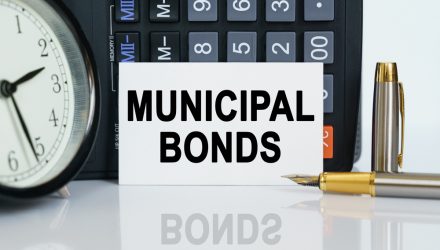With the widely observed Bloomberg US Aggregate Bond Index down 11.55% year-to-date, it’s easy to understand why fixed income investors are frustrated and why many are departing the related funds, including exchange traded funds.
Those scenarios could get worse before improving because the August reading of the Consumer Price Index (CPI) was worse than expected, indicating that the Federal Reserve likely has no choice but to continue raising interest rates, potentially in aggressive fashion.
To that end, it’s not surprising that investors yanked $156 billion from taxable bonds this year, as of July 31, but those moves could be hasty, particularly when considering the utility of municipal bonds and ETFs such as the VanEck Vectors High Yield Muni ETF (HYD).
One of the reasons to consider HYD today is that with bonds, just like with any other asset class, timing matters, and selling low and buying higher is a strategy that adversely affects a portfolio’s returns.
“For taxable-bond funds, we found that investor returns lagged total returns by 117 basis points, on average, for the 10 years ended Dec. 31, 2021,” noted Morningstar analyst Amy Arnott. “On the surface, that’s actually better than the 1.7-percentage-point return gap across all category groups. But the low level of returns for taxable-bond funds makes this return gap particularly damaging. Over the trailing 10-year period, total returns averaged only about 3.6% per year, and investors missed out on about a third of those returns, earning only 2.4% per year in dollar-weighted terms.”
In favor of HYD are the points that municipal bonds offer credible recession protection and that state and local finances are currently strong, indicating defaults and downgrades are likely to be few and far between.
Additionally, amid a coming wave of folks entering retirement, some investors may be compelled to return bond ETFs such as HYD over the near term.
“Fixed-income holdings also play an increasingly important role as millions of investors transition into retirement. Based on data from the U.S. census bureau, 20.3 million Americans (or 6.2% of the population) are between age 60 and 64 and will reach retirement age within the next several years. An additional 52.4 million individuals (or 16.8% of the U.S. population) were already 65 or older as of mid-2021,” added Arnott.
To top it off, HYD offers the benefits of a 30-day SEC yield of 4.24%, which is well above what investors earn with 10-year Treasuries.
For more news, information, and strategy, visit the Beyond Basic Beta Channel.
The opinions and forecasts expressed herein are solely those of Tom Lydon, and may not actually come to pass. Information on this site should not be used or construed as an offer to sell, a solicitation of an offer to buy, or a recommendation for any product.







